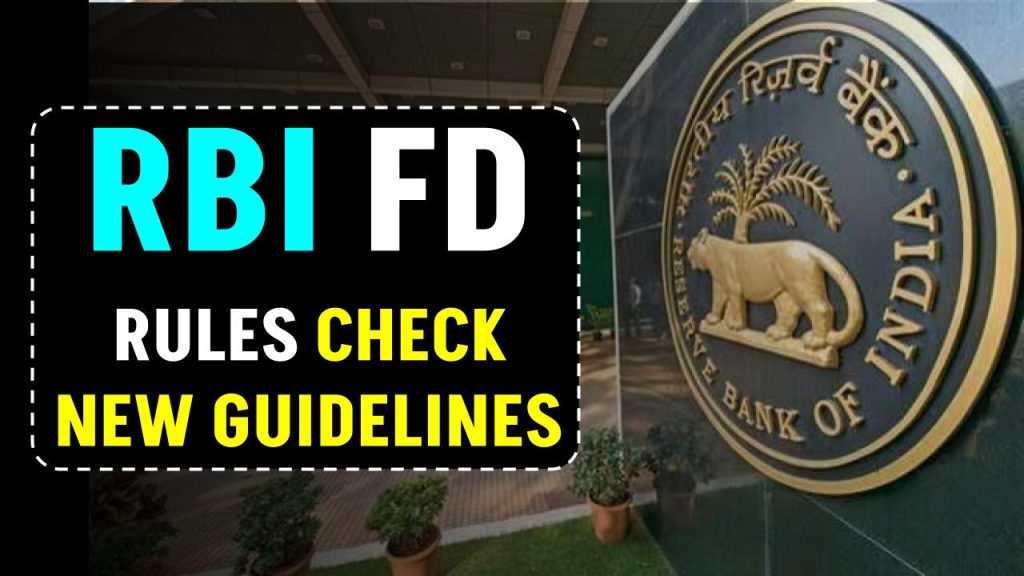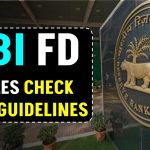
The Reserve Bank of India (RBI) has introduced new Fixed Deposit (FD) rules that will take effect from January 1, 2025. These changes aim to provide greater flexibility and liquidity to FD holders, especially in cases of financial emergencies. If you have an FD or are planning to open one, it’s crucial to understand how these changes might impact your savings and investment decisions.
RBI FD Rules
| Feature | Updated Rules |
|---|---|
| Premature Withdrawal (Small Deposits) | Depositors can withdraw FDs up to ₹10,000 within 3 months but won’t earn any interest. |
| Partial Withdrawal (Larger Deposits) | Deposits above ₹10,000 allow 50% withdrawal (or up to ₹5 lakh) within 3 months, without interest on the withdrawn amount. |
| Withdrawal in Case of Critical Illness | Full principal withdrawal allowed at any time for medical emergencies. |
| FD Maturity Notification | Banks and NBFCs must notify depositors at least 14 days before maturity (previously 2 months). |
| Impact of Repo Rate Cut | RBI has reduced the repo rate by 25 bps (to 6.25%), which may affect FD interest rates. |
For official RBI guidelines, visit: www.rbi.org.in
The RBI’s new FD rules for 2025 are a positive step for depositors, providing greater financial flexibility and liquidity. Whether you’re a small saver or a large investor, these changes ensure better access to funds while protecting your investment. RBI FD Rules: Check RBI New FD Guidelines, Big Boost for Fixed Deposit HoldersWith the repo rate cut, FD interest rates may fluctuate, so it’s crucial to compare rates before locking in your money.
Final Tip: Keep track of RBI updates and choose an FD that aligns with your financial goals.
Also Check: JioCoin EXPLAINED! How to Earn JioCoins FREE & Redeem —Here’s How!
RBI FD Rules Understanding the New FD Regulations in Detail
Premature Withdrawal for Small Deposits
If you have a Fixed Deposit (FD) of up to ₹10,000, you can now withdraw the full principal amount within three months of opening it. However, there’s a catch—you won’t earn any interest on the deposit if you withdraw within this period.
Partial Withdrawal for Larger Deposits
For deposits above ₹10,000, the RBI allows depositors to withdraw up to 50% of their principal amount or ₹5 lakh (whichever is lower) within three months. However, similar to the small deposit rule, the withdrawn amount will not accrue any interest.
Example:
If you have an FD of ₹8 lakh and need urgent cash, you can withdraw ₹4 lakh (50%). However, this amount will not earn any interest if withdrawn within three months.
Full Withdrawal in Case of Critical Illness
A major relief has been provided to depositors facing critical illnesses. Under the new rules, you can now withdraw the entire principal amount at any time in case of medical emergencies.
This ensures that depositors won’t have to break their FDs at a loss during tough times.
Timely Maturity Notifications: Previously, banks and Non-Banking Financial Companies (NBFCs) had to notify customers about FD maturity two months in advance. However, this period has now been reduced to 14 days. This change is intended to enhance financial planning for depositors.
Also Check: UP BEd JEE 2025: Registration Begins – Step-by-Step Guide to Apply Before March 8
RBI FD Rules Impact of RBI’s Repo Rate Cut on FD Interest Rates
Along with these regulatory changes, the RBI has also cut the repo rate by 25 basis points (bps), bringing it down to 6.25%. This directly impacts FD interest rates, as banks adjust deposit rates based on changes in the repo rate.
How Does the Repo Rate Affect FDs?
The repo rate is the rate at which RBI lends money to commercial banks. When the repo rate is lowered, banks generally reduce the interest rates on deposits.
For example, DCB Bank has already cut FD interest rates by up to 65 bps after the latest RBI decision.
| Bank | Previous FD Rate | New FD Rate |
|---|---|---|
| DCB Bank | 7.25% | 6.60% |
| SBI Bank | 6.50% | 6.25% |
| HDFC Bank | 7.00% | 6.75% |
Pro Tip: If you’re planning to invest in FDs, compare rates across banks before making a decision.
How These New RBI FD Rules Benefit Depositors
Increased Flexibility
The new partial and premature withdrawal rules allow depositors to access their funds in case of emergencies without completely breaking their FDs.
Better Financial Security
The full withdrawal for critical illnesses ensures depositors have access to funds when they need them most.
More Transparency
The 14-day maturity notification helps depositors plan ahead and make informed financial decisions.
Liquidity Boost: With easier access to funds, depositors won’t have to take costly loans or credit in emergencies.
Practical Tips for FD Investors
- Compare FD Interest Rates: Since rates may fluctuate due to the repo rate cut, always check which bank is offering the best returns.
- Use the Partial Withdrawal Option Wisely: Instead of breaking an FD completely, withdraw only what you need to avoid losing interest.
- Stay Updated on RBI Policies: Follow official sources like RBI’s website to keep track of future changes in FD regulations.
- Consider Laddering Your FDs: Spread your investments across different tenure periods to maximize returns and maintain liquidity.
Also Check: ADRE Result 2024 To Be Announced Soon: Download Assam Direct Recruitment Exam Result Online Direct Link Here
RBI FD Rules (FAQs)
How will the new rules affect my FD investments?
The changes offer more flexibility in withdrawing funds while ensuring depositor protection in emergencies.
Will banks still offer high interest rates on FDs?
It depends. Some banks may lower FD rates due to the repo rate cut, but others may continue offering competitive rates.
Is it a good time to invest in FDs?
If you prefer safe and stable returns, FDs remain a great option. However, compare interest rates before making a decision.
Can I withdraw my FD early under the new rules?
Yes, but withdrawals within 3 months may result in loss of interest, depending on the deposit amount.
Where can I check the latest FD interest rates?
Visit your bank’s official website or check the RBI’s website (www.rbi.org.in) for updated FD rates.









